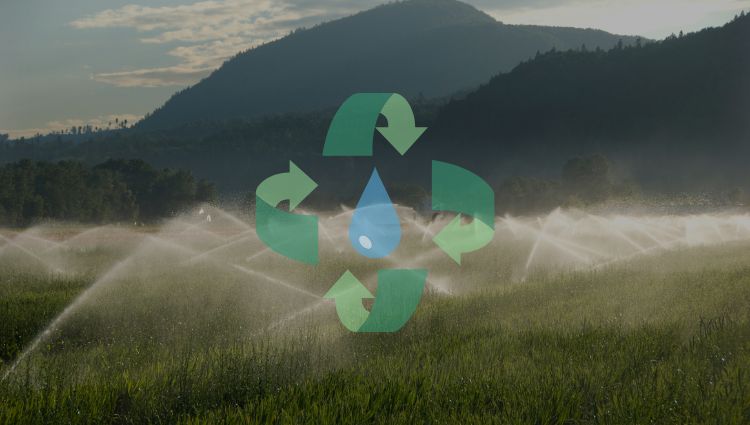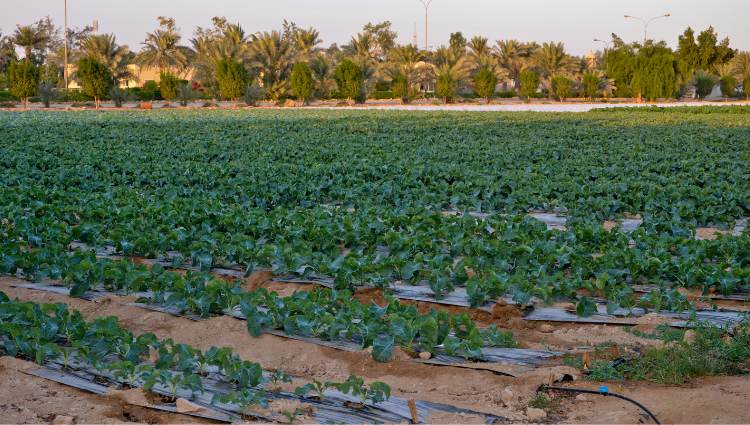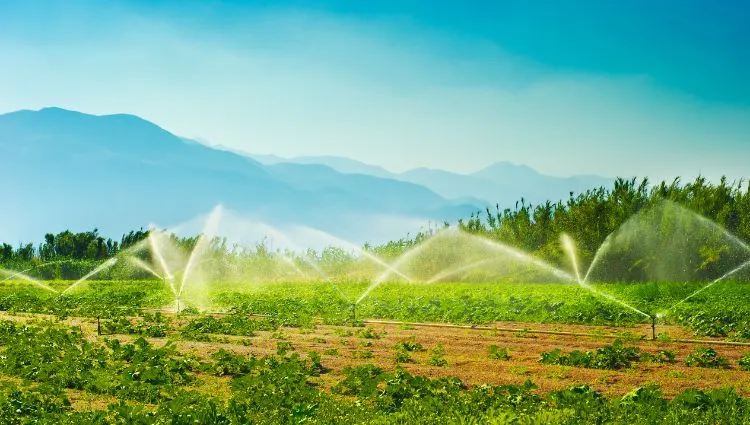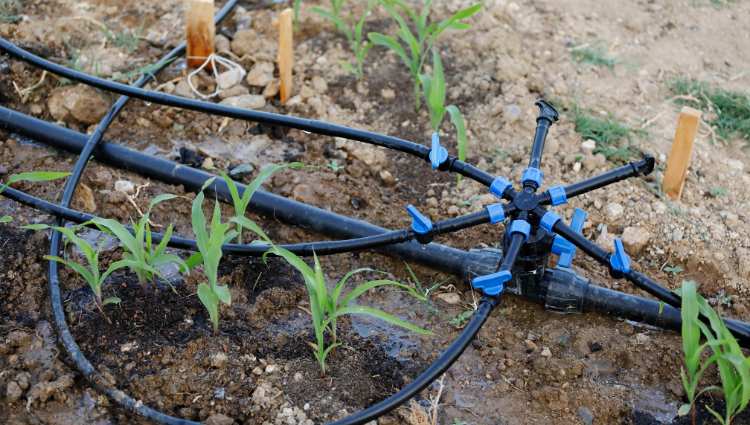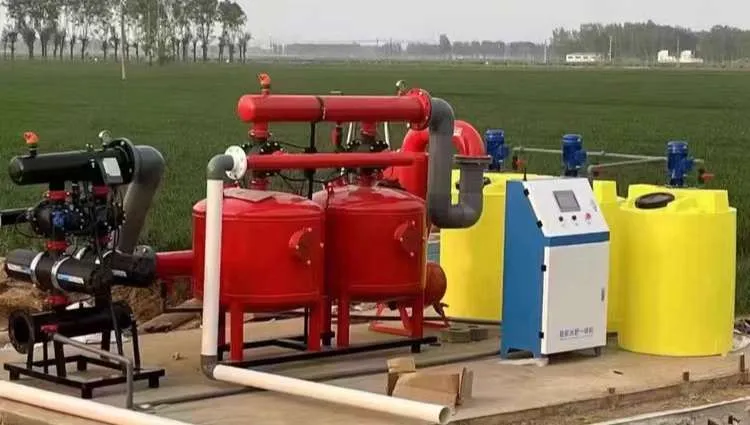সূচিপত্র
When laying irrigation pipes, they are often buried underground. Burying the pipes not only prevents them from being exposed to harsh sunlight or cracking due to freezing but also facilitates surface farming activities, maximizing the lifespan of the pipes.
তাই, how deep should irrigation pipes be buried? আসলে, this depends on various factors such as climate, terrain, soil type, pipe type, এবং আরো. This post will provide you with a detailed answer.
Climate

The climate varies in different places, so the burial depth of irrigation pipes also differs.
Taking China as an example, the eastern and southern regions have relatively mild temperatures, and there is rarely a frozen soil layer in winter; temperatures seldom fall below zero degrees Celsius. সুতরাং, when laying irrigation pipes, there is generally no need to consider frost protection. The burial depth of irrigation pipes should be greater than 40 centimeters (about 16 inches), which can protect the pipes while not interfering with surface farming operations.
If the farmland is large and large agricultural machinery (such as seeders, harvesters, ইত্যাদি) is frequently used, then burying the pipes at a depth of 50–60 centimeters (about 20–24 inches) is also entirely sufficient. তবে, it is necessary to evaluate the soil’s bearing capacity; sometimes, to prevent ground collapse caused by heavy machinery, foundation reinforcement is needed.
In the northeastern region of China, winters are very cold, with average temperatures sometimes falling below minus 15 degrees Celsius. If the pipes are buried too shallowly, they may be at risk of freezing and cracking. সুতরাং, the burial depth of pipes needs to be below the frost line, generally reaching 150 centimeters (about 59 inches) or more.
Terrain

Different terrains require different burial depths for irrigation pipes. উদাহরণস্বরূপ, in flat plains, the terrain is level, so generally the supply pipes can be buried at a depth of 40–50 centimeters (about 16–20 inches). তবে, in mountainous areas where the terrain is rugged and complex, the pipe laying depth needs to be evaluated comprehensively based on the terrain, installation difficulty, cost, and other factors.
Soil Types

Common soil types in agriculture include loam and sandy soil. The burial depth of irrigation pipes varies between these two soil types.
Taking drip tape as an example: it generally needs to be shallowly buried. In loam soil, which has good water retention, nutrient retention, and aeration, drip tape is usually buried shallowly at a depth of 2–4 centimeters (about 0.8–1.6 inches).
If the soil is sandy or contains a high sand content, the drip tape needs to be buried slightly deeper, generally at 3–5 centimeters (about 1.2–2.0 inches).
Additionally, it is worth mentioning that sometimes in fields using drip tape irrigation, mulch film is applied. এই ক্ষেত্রে, with the protection of the film, the drip tape only needs to be buried very shallowly, at a depth of 1–2 centimeters (about 0.4–0.8 inches).
Pipe Types

Irrigation pipes are usually divided into main pipes and branch pipes. The main pipes are typically made of PVC or PE. Their material is relatively rigid and their size is larger; depending on the region and terrain, they are generally buried within a range of 30–100 centimeters (about 12–39 inches).
In drip irrigation systems, the branch pipes are often driplines or drip tapes. These can be laid directly on the soil surface or shallowly buried just a few centimeters underground. Because driplines and drip tapes have emitters, when buried underground they need to avoid clogging and thus should not be buried too deep.
In sprinkler systems, engineers can flexibly determine the burial depth according to actual needs. উদাহরণস্বরূপ, with pop up sprinklers, the sprinkler heads are retractable and need to remain flush with the ground surface. Workers can calculate the required burial depth based on this characteristic.
Furthermore, for sprinklers with risers, engineers need to select the burial depth based on the desired spraying effect (such as lift height and radius) as well as the actual climate and terrain. সাধারনত, a burial depth between 30 centimeters (about 12 inches) এবং 100 centimeters (about 39 inches) is suitable.
By reading this article, you should already understand that the burial depth of irrigation pipes is influenced by many factors. আসলে, there is often no fixed answer. You can assess the depth based on your actual situation, considering factors such as climate, terrain, pipe type, soil type, এবং তাই.
তবে, it is also important to note that the deeper the pipe is buried, the better is not always true. Greater depth not only makes maintenance and replacement more difficult but also increases costs significantly. When you actually lay the pipes, just take all these factors into account and find a balance.
চূড়ান্ত শব্দ
অবশেষে, please allow me to introduce our company here. Rainfaun চীনে সদর দপ্তর একটি সেচ পণ্য প্রস্তুতকারক. Pipe materials and fittings are among our main products, সহ PVC pipes and fittings, BSP thread pipes and fittings, পিপি জিনিসপত্র, lay flat hoses, driplines, drip tapes, এবং আরো. আপনি তথ্য খুঁজে পেতে পারেন Rainfaun সম্পর্কে এবং আমাদের পণ্য এই ওয়েবসাইটে.
আপনি যদি আমাদের সাথে সহযোগিতা করতে চান, আপনি পারেন এখানে ক্লিক করুন ফর্ম পূরণ করতে.
লেখক: মাইকেল
সম্পাদক: মাইকেল
বিষয়বস্তু পর্যালোচনাকারী: মাইকেল


